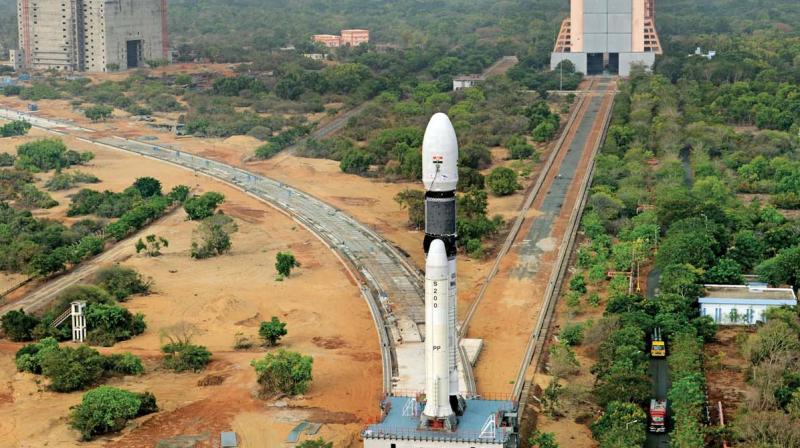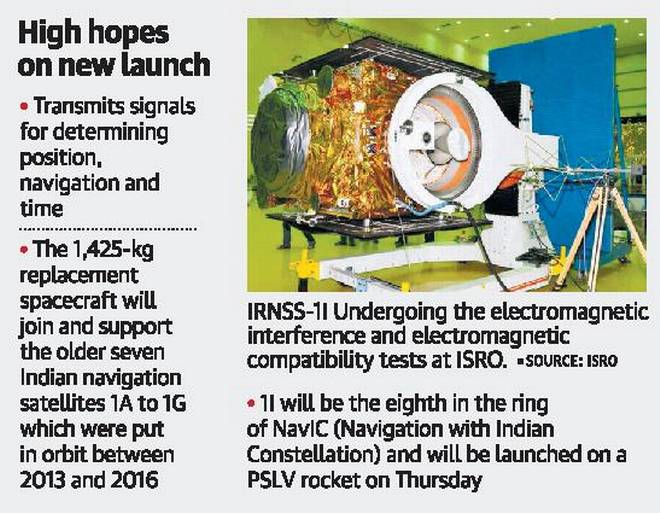- Despite snapping of the communication link with its recently launched communication satellite Gsat-6A, ISRO is gearing up for the scheduled launch of its next navigation satellite IRNSS-1I on April 12.
- IRNSS-1I, which will be launched by PSLV-C41 rocket from Sriharikota, will replace faulty IRNSS-1A navigation satellite, whose three Rubidium atomic clocks (meant to measure precise location data) had stopped working two years ago.
- IRNSS-1I weighing 600kg (dry mass) and a life span of 10 years will become the eighth satellite to join the constellation of navigation satellites called NavIC/NAVIC(Navigation with Indian Constellation) or popularly known as IRNSS
- The seven-satellite indigenous navigation system is a smaller version of the American GPS, which with 31 satellites has global reach. The ‘desi’ GPS is designed to provide accurate position information service to users in India as well as the region extending up to 1,500 km from its boundary.
- On August 31 last year (2017), ISRO tried to launch IRNSS-1H to replace faulty IRNSS-1A but the navigation satellite got stuck in the heat shield of the PSLV rocket during the launch. The satellite, still stuck in the heat shield and now declared space debris, is wandering in the near-earth orbit and will ultimately fall to the Earth.
- In the previous launch, though the GSLV-F08 rocket launched the GSAT-6A satellite perfectly, the communication with the satellite was lost following the second orbit raising operation on April 1.The officials are still trying to resume communication with the satellite and trying to revive it.
Source: The Hindu


